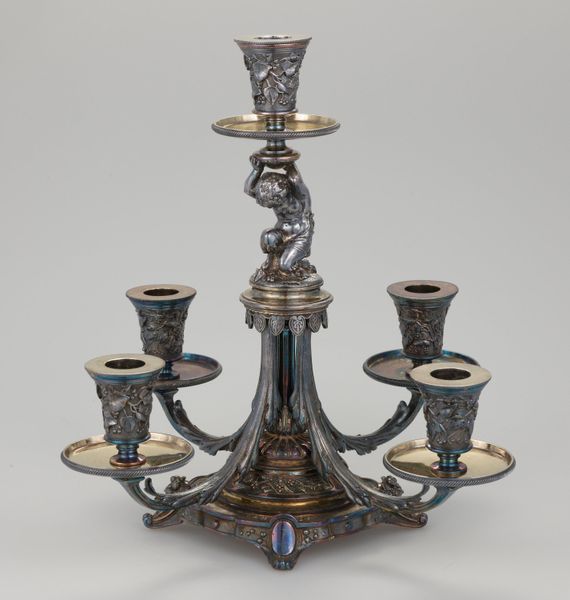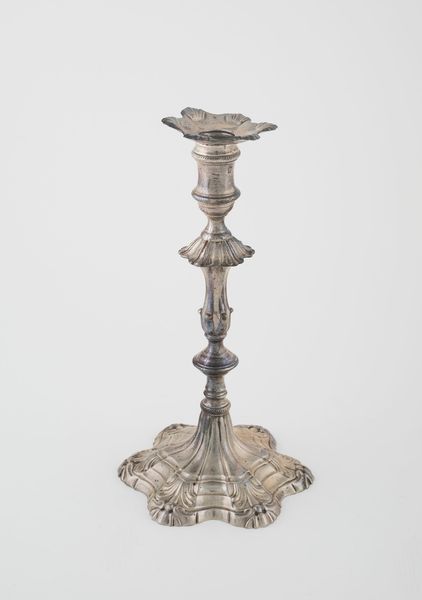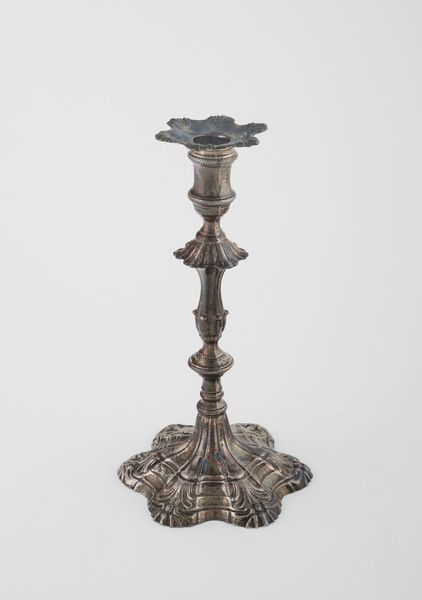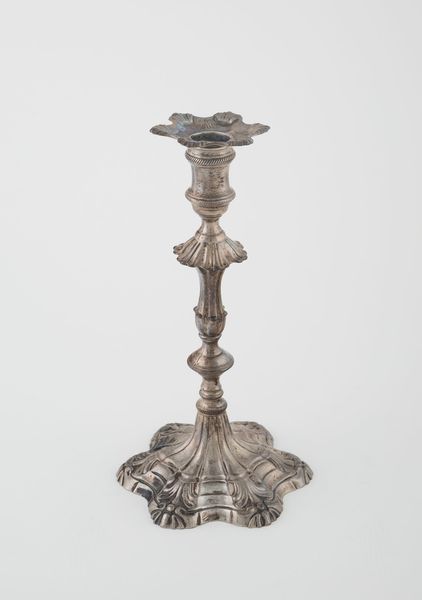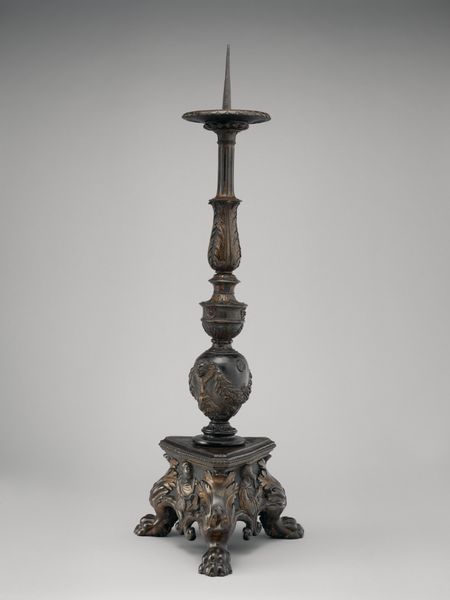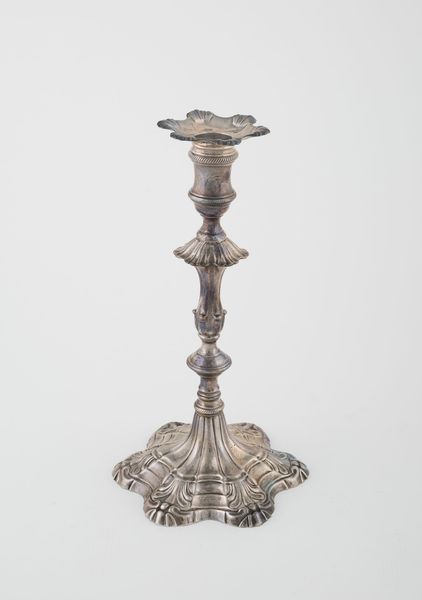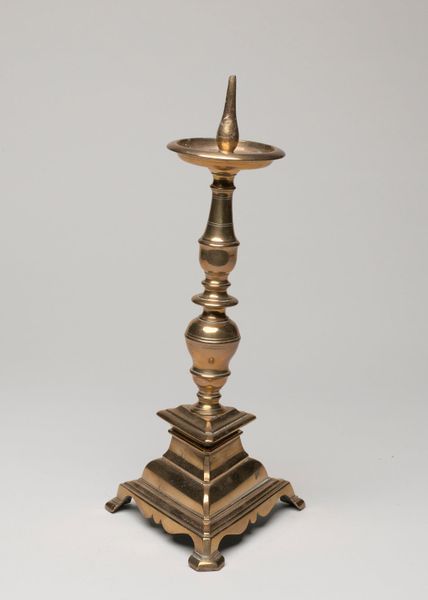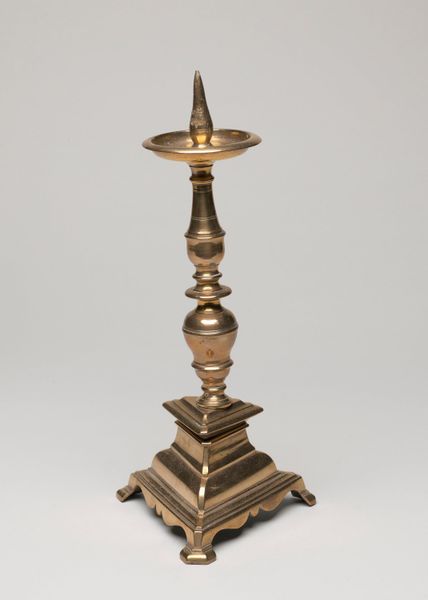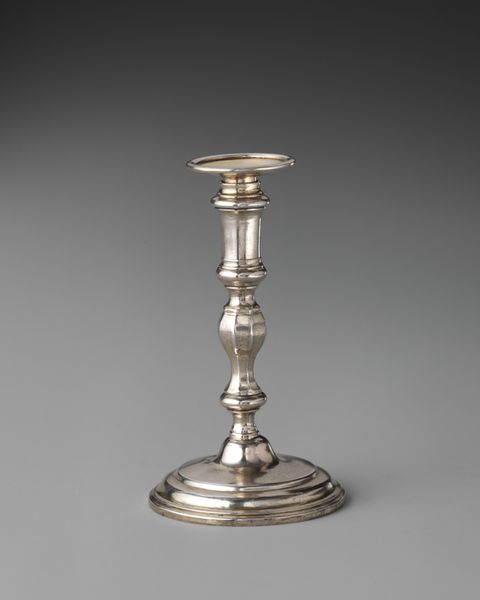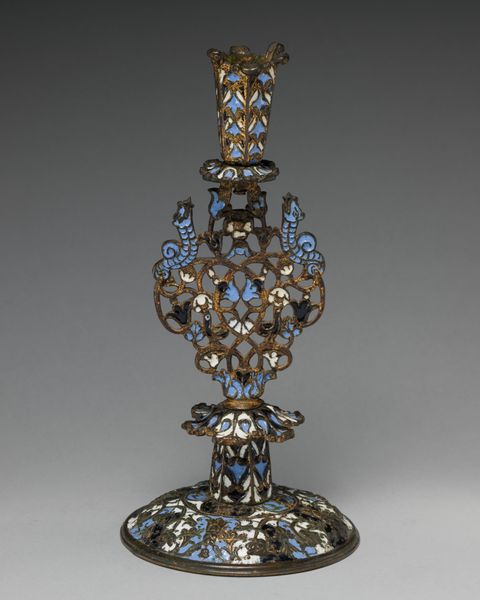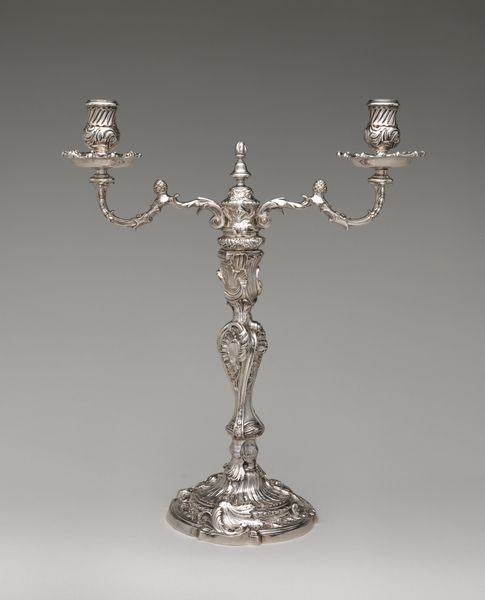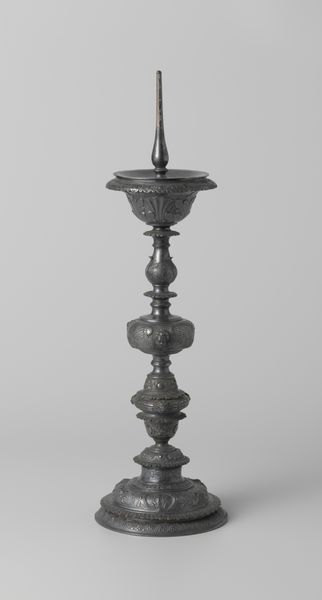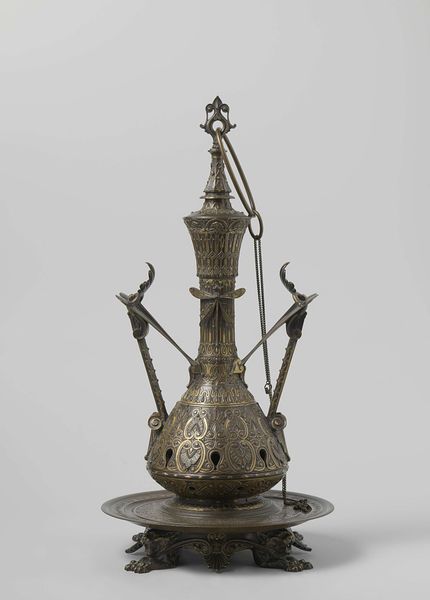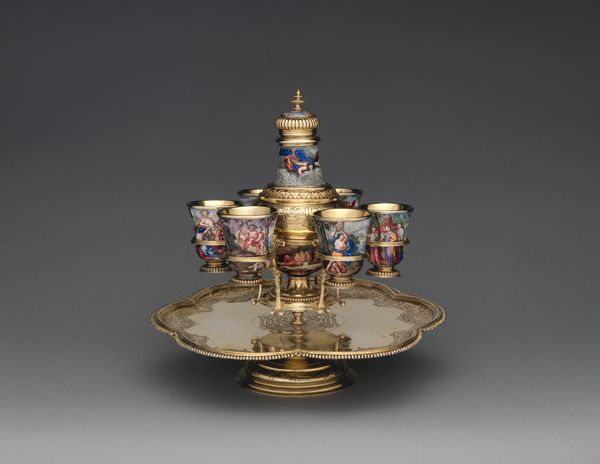
Copyright: Public Domain
Editor: So, this is a candelabra from a centerpiece, made around 1864, likely in England. It's made of brass and other metals, with what appears to be some ceramic elements too. It strikes me as incredibly ornate and opulent – a real show of wealth. What stands out to you? Curator: It’s definitely a statement piece, isn't it? Looking at its historical context, the mid-19th century in England saw a rise of industrial wealth, and these types of objects played a key role in constructing identity. Displaying such an intricate centerpiece would signify status and taste, contributing to social distinction. Notice the baroque revival style; how does that influence its reception, do you think? Editor: I guess it ties it to a tradition of aristocratic power and grandeur. Like, “We have always been wealthy and cultured." Curator: Precisely! And think about the intended setting. Gas lighting was becoming common, so this candelabra becomes less about necessity and more about theatricality. The light it provided would contribute to creating an atmosphere in a parlor or dining room meant to impress visitors, showcasing family prosperity. What do you think of the central figure of the child holding up a candlestick? Editor: I find the figure a little sentimental. Curator: That’s interesting. I’d push that further, though. Consider it as an embodiment of innocence and virtue, values which upper-middle-class families wished to project. What it signified to contemporaries is worth emphasizing, it's a calculated form of display. Editor: I see, it's a narrative being told through objects. So even a candelabra isn't just a candelabra – it’s loaded with meaning about social aspirations and public image. Thanks! Curator: Exactly! Analyzing decorative arts helps reveal the intricate relationships between art, society, and the ever-shifting landscapes of power. It shows us the social work objects perform.
Comments
No comments
Be the first to comment and join the conversation on the ultimate creative platform.
